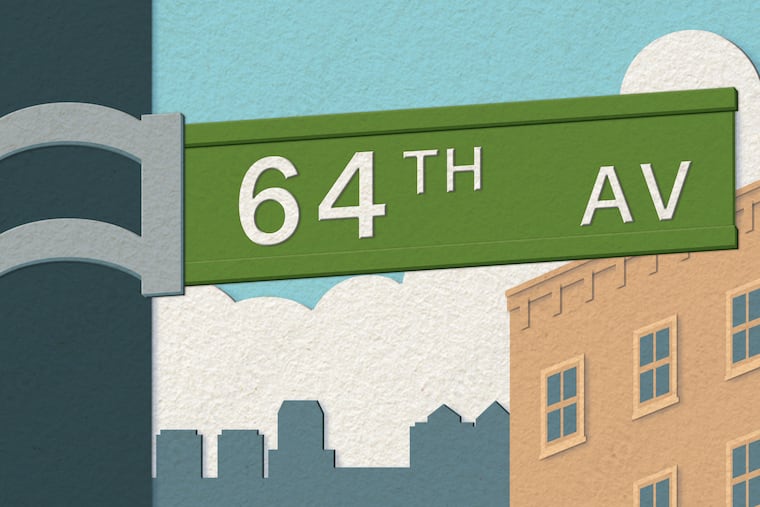Avenues in Philly begin at 64th. What happened to 1st through 63rd?
“Why do the avenues in Philadelphia begin at 64th Avenue when there is no 1st through 63rd Avenue?” asked reader John Chivers.

John Chivers has been obsessed since he was a kid with discovering why avenue numbers in Philadelphia start at 64th.
Imagine coming into Northwest Philly. Godfrey, Spencer, and Champlost Avenues are in the rearview mirror. Chelten Avenue welcomes you to East Oak Lane. But out of nowhere, the sign posts turn from names to numbers. Those signs don’t start with the classic First, Second, Third, but jump all the way to 64th Avenue and continue ascending to 80th.
“I was like, ‘Where did these avenues come from and where are all the other preceding ones?’” said the now 57-year-old Chivers.
He tried to find the answer by asking longtime Oak Lane residents, only to leave them scratching their heads and pondering the same.
After moving to Mount Airy in 1997, Chivers went as far as contacting the Free Library of Philadelphia, but the librarian didn’t have an answer. Later, Google didn’t help, either.
Decades after the Delaware County native first encountered this puzzle, he continues to look for an answer — even after having relocated to North Carolina in 2006.
“Why do the avenues in Philadelphia begin at 64th Avenue when there is no 1st through 63rd Avenue?” he asked Curious Philly, The Inquirer’s forum for questions about the city and region.
After doing our own research, we, too, were left disappointed without a full answer. But we got halfway for Chivers.
How a councilmember changed Philadelphia’s streets
The Department of Streets’ traffic unit believes the street naming conventions might be related to Philadelphia’s addressing system.
Introduced in 1856 by Councilmember John Mascher, Philly’s addressing structure is known as the “decimal system” or the Philadelphia system.
This method recognizes streets as going from north to south and avenues from east to west.
“The names of the avenues correspond to the address ranges of the intersecting north-south streets,” said spokesperson Keisha McCarty-Skelton. “For example, the 6700 block of North Broad Street runs between 67th and 68th Avenues.”
Before the Philadelphia system, streets were counted inward from both the Schuylkill and the Delaware Rivers, said Marija Gudauskas, the Free Library of Philadelphia’s federal depository coordinator. This led to two Second Streets, two Eighth Streets, and multiple other duplicated streets that met at City Hall.
“With the Mascher decimal system, Schuylkill Eighth Street became 15th Street, Schuylkill Second became 21st Street,” Gudauskas said.
But this wasn’t the only time roads saw their names changed.
Many current avenues were former lanes, and roads that lined estates in the 19th century continued to be renamed throughout the decades to allow for city development. The Oak Lane area itself was redeveloped in the 1910s and 1920s to create suburban-style homes, according to Gudauskas. For instance, in 1919, portions of Fracker Street became the current 72nd Avenue. By 1931, Pittville Avenue turned into 69th Avenue.
Although The Inquirer reached out to multiple city departments, the Free Library, the Historical Society of Pennsylvania, and the Athenaeum of Philadelphia, a deeper answer on why there are no First to 63rd Avenues in Philly seems lost to time.
For Chivers, this feels like somewhat of an explanation. “It makes sense ... but, I still would love to know actually what happened there,” he said. As he hopes there is someone out there “in the know,” he said he might dig a little deeper himself.